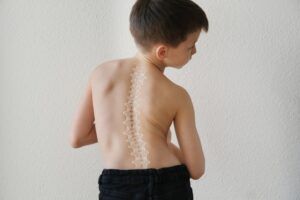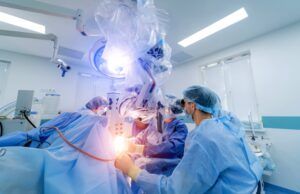Recovering from spine surgery is a crucial process that determines the long-term success of the procedure. While surgery can relieve chronic neck and back pain, the recovery phase requires patience, adherence to medical advice, and gradual rehabilitation. At Spine, Neck, & Back Specialists, Dr. Jay Reidler and his team provide personalized care to support patients through their healing journey. Serving Bloomfield, Englewood, and Union City, NJ, we guide patients through every stage of post-surgical recovery to ensure the best possible outcomes.
Immediate Post-Surgery Phase: Hospital Recovery
Following spine surgery, patients typically spend a short period in the hospital to monitor their condition. The length of stay varies based on the type of procedure performed.
Most patients can expect:
- Pain management: Medications help control post-operative discomfort, allowing for early mobility.
- Wound care: Incisions are monitored for signs of infection or complications.
- Initial movement: Patients are encouraged to stand and walk with assistance to promote circulation and prevent stiffness.
For minimally invasive procedures like microdiscectomy, patients may go home the same day or within 24 hours. More complex surgeries, such as spinal fusion, may require a longer hospital stay.
The First Few Weeks: Managing Pain and Mobility
The first few weeks after surgery are crucial for initial healing and avoiding complications. Patients are advised to follow strict activity restrictions and avoid movements that could strain the spine.
During this phase:
- Pain and inflammation gradually subside with prescribed medications.
- Patients are encouraged to walk regularly to prevent stiffness and promote healing.
- Heavy lifting, bending, and twisting should be avoided to prevent stress on the spine.
- Sleeping positions should support spinal alignment, often with a firm mattress and pillows for support.
Some patients may need assistive devices like braces or walkers to aid mobility, depending on the procedure and individual recovery progress.
Physical Therapy and Rehabilitation
Physical therapy plays a key role in spine surgery recovery by strengthening muscles, improving flexibility, and restoring function. A structured rehabilitation program typically begins a few weeks after surgery.
A well-rounded therapy plan includes:
- Gentle stretching exercises to maintain flexibility
- Core strengthening to support the spine and prevent future injuries
- Posture correction techniques to reduce strain and promote proper alignment
- Gradual increase in activity levels to regain normal function without overexertion
The length of rehabilitation varies based on the procedure, with some patients recovering within a few months, while others require up to a year for full recovery.
Lifestyle Adjustments for Long-Term Spine Health
Successful spine surgery recovery extends beyond the initial healing phase. Long-term lifestyle adjustments help maintain spinal health and prevent future issues.
Patients should focus on:
- Maintaining a healthy weight: Excess weight adds pressure on the spine, slowing recovery and increasing the risk of future problems.
- Using ergonomic support: Proper chairs, mattresses, and work setups reduce unnecessary strain on the back and neck.
- Engaging in low-impact exercise: Swimming, walking, and yoga can keep the spine flexible without adding stress.
- Avoiding prolonged sitting or standing: Changing positions frequently prevents stiffness and discomfort.
Making these adjustments helps patients not only recover but also maintain a pain-free and active lifestyle after surgery.
Signs of Recovery Progress and When to Seek Medical Attention
While most patients recover without complications, it is essential to monitor for warning signs that require medical attention.
Patients should contact their doctor if they experience:
- Persistent or worsening pain that is not relieved by medication
- Signs of infection, such as redness, swelling, or drainage at the surgical site
- Numbness, weakness, or loss of sensation in the limbs
- Difficulty controlling bladder or bowel function, which could indicate a serious complication
Regular follow-up visits allow the doctor to assess progress, adjust treatment plans, and address any concerns during the recovery period.
Your Recovery Journey Starts Here
Recovering from spine surgery is a process that requires patience, commitment, and professional guidance. At Spine, Neck, & Back Specialists, Dr. Jay Reidler and his team provide personalized post-operative care to ensure a smooth recovery for each patient.
Now accepting CIGNA PPO and many other insurance plans, we are dedicated to making expert spine care accessible. If you have recently undergone surgery or are preparing for a procedure, contact us to learn more about our comprehensive recovery programs.
Sources:
- Bono, C. M., & Lee, C. K. (2004). Critical analysis of trends in fusion for degenerative disc disease. Spine Journal.
- Fehlings, M. G., Tetreault, L. A., Riew, K. D., et al. (2017). A clinical practice guideline for the management of degenerative cervical myelopathy. Global Spine Journal.
- Weinstein, J. N., Lurie, J. D., Tosteson, T. D., et al. (2008). Surgical versus nonoperative treatment for lumbar degenerative spondylolisthesis. New England Journal of Medicine.




